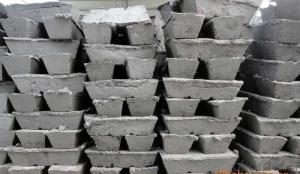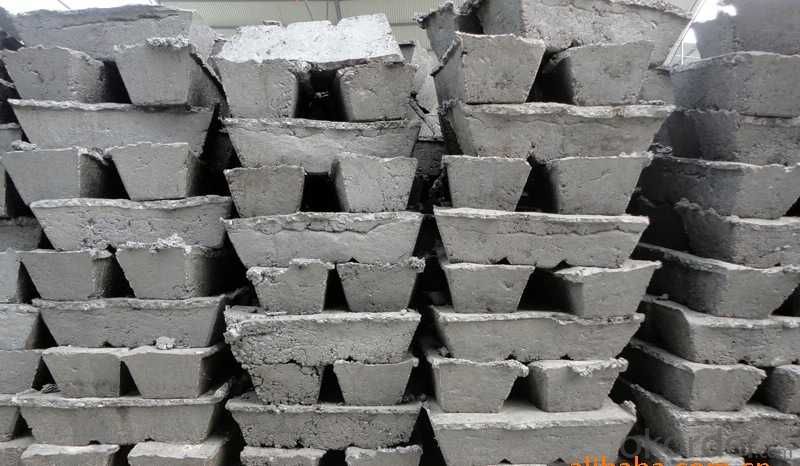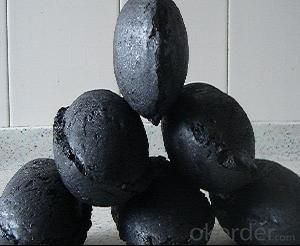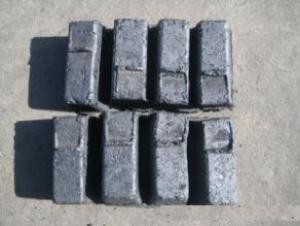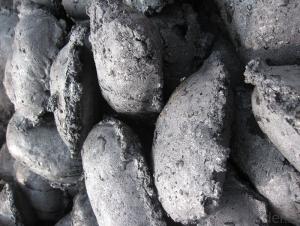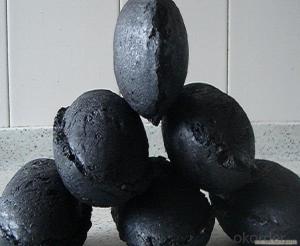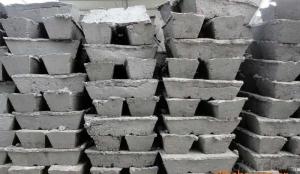Carbon Electrode Paste -Ash7 with Good Quality Low Ash
- Loading Port:
- Lianyungang
- Payment Terms:
- TT OR LC
- Min Order Qty:
- 20 m.t.
- Supply Capability:
- 2000 m.t./month
OKorder Service Pledge
OKorder Financial Service
You Might Also Like
Spcifications
1:carbon eletrode paste
2:for ferroalloy,calcium carbide manufacture
3:HS 3801300000,YB/T5212-1996,ISO9001:2008
Product Description
Carbon Electrode Paste is a self-baking electrode used in submerged arc furnaces for delivering power to the charge mix. Electrode Paste is added to the top of the electrode column in either cylindrical or briquette form. As the paste moves down the electrode column the temperature increase causes the paste to melt and subsequently bake forming a block of electrically conductive carbon. Electrode Paste is essentially a mix of Electrically Calcined Anthracite (ECA) or Calcined Petroleum Coke (CPC) with Coal Tar Pitch.
Graphite/Carbon Electrode Paste Specification:
PARAMETER UNIT GUARANTEE VALUE
Ash.( % ) 4.0 max5.0 max 6.0 max 7.0 max 9.0 max11.0 max
V.M (%) 12.0-15.512.0-15.5 12.0-15.5 9.5-13.5 11.5-15.511.5-15.5
Compress Strength. 18.0 min17 min 15.7 min 19.6 min 19.6 min19.6 min
Specific Resistance 65 max68 max 75 max 80 max 90 max90 max
Bulk Density 1.38 min1.38 min1.38 min 1.38 min 1.38 min1.38 min
Picture:
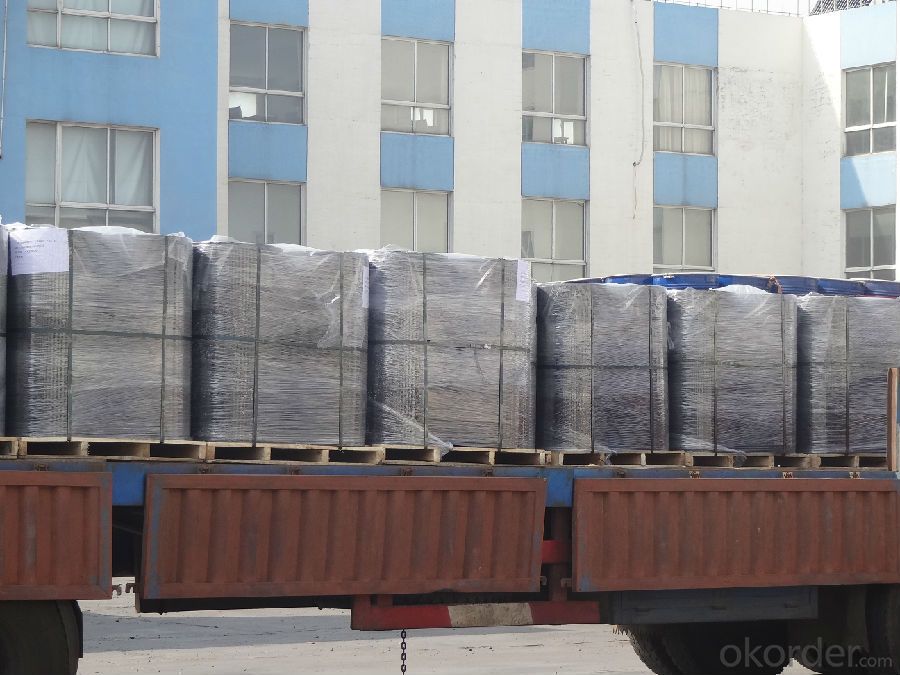
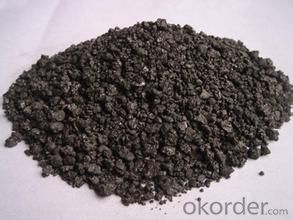
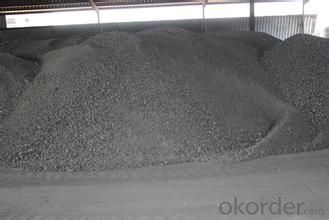
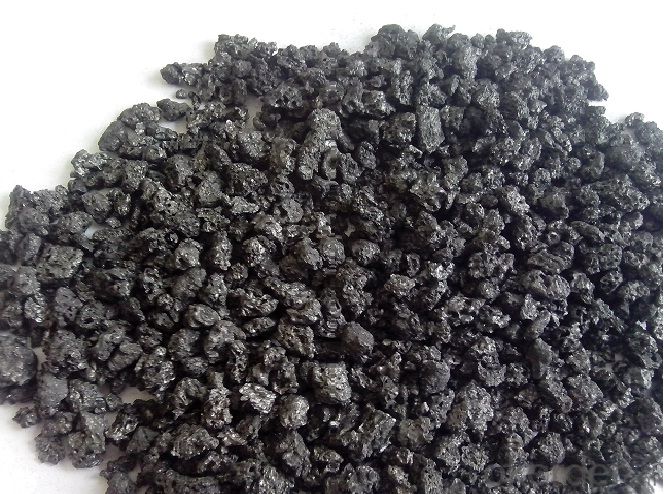
Company information:
China National Building Materials Group is a stated -owned enterprise in charge of administrative affairs in China buiding materials industry.Established in 1984 CNBM is a large group corporation of building materials with total assets of 25 billion and a total stuff of 30000 CNBM now owns 200 subordinating firms of solely owned and joint-venture companies.
- Q: What is carbon offsetting in aviation?
- Carbon offsetting in aviation is a mechanism that aims to neutralize the carbon emissions produced by the aviation industry. As airplanes are a significant source of greenhouse gas emissions, carbon offsetting provides a way for airlines and passengers to take responsibility for their carbon footprint and contribute to the fight against climate change. The process of carbon offsetting involves calculating the amount of carbon dioxide and other greenhouse gases emitted during a flight and then investing in projects that reduce an equivalent amount of emissions elsewhere. These projects can include renewable energy initiatives, forest conservation, or methane capture projects. The idea is that the emissions reduced or removed by these projects offset the emissions produced by the aviation industry. To participate in carbon offsetting, airlines or passengers can purchase carbon offsets, which are essentially credits representing the reduction or removal of one metric ton of carbon dioxide or its equivalent. These offsets are generated by certified projects that meet strict standards and are independently verified. By investing in carbon offsets, the aviation industry can contribute to global efforts to reduce greenhouse gas emissions and mitigate the impact of air travel on climate change. It allows airlines and passengers to take immediate action to counteract the environmental consequences of flying, as the reduction or removal of emissions from offset projects helps to balance out the emissions produced by air travel. Carbon offsetting in aviation is not a means to justify or ignore the need for long-term solutions to reduce emissions from aircraft. It should be seen as a complementary measure to other strategies such as investing in more fuel-efficient aircraft, using sustainable aviation fuels, and implementing operational improvements. However, carbon offsetting does provide a valuable tool to mitigate emissions in the short term while the aviation industry works towards more sustainable practices.
- Q: What are the effects of ocean acidification on marine life?
- The detrimental effects of ocean acidification on marine life are substantial. The primary reason for this phenomenon is the rise in carbon dioxide (CO2) emissions, which the oceans absorb and cause a decrease in pH levels. This increasing acidity has profound consequences for a variety of marine organisms and ecosystems. Shell-forming organisms, such as corals, mollusks, and certain plankton, are among the most vulnerable groups affected by ocean acidification. The acidity reduces the availability of carbonate ions, which are crucial for these organisms to construct and upkeep their shells or skeletons. Consequently, their growth and development are hindered, making them more susceptible to predation and extinction. This not only impacts these specific species but also disrupts the entire food chain since they serve as a vital food source for numerous other marine organisms. Moreover, ocean acidification has negative effects on the physiology and behavior of various marine organisms. Research has indicated that it can impair the ability of fish to detect predators, find food, and navigate, leading to decreased survival rates and modified migratory patterns. Additionally, acidification can disrupt reproductive processes, such as the growth and survival of fish larvae, resulting in population declines and reduced biodiversity. Coral reefs, often referred to as the "rainforests of the sea," are especially susceptible to ocean acidification. The increased acidity hampers the calcification process necessary for coral growth, making them more prone to bleaching and death. As coral reefs provide essential habitats for numerous marine species, their decline would have a cascading impact on the entire ecosystem. Lastly, ocean acidification also affects the equilibrium of marine ecosystems by changing the composition and abundance of various species. Some organisms, like certain types of algae, may actually benefit from elevated CO2 levels and thrive, causing an imbalance in the ecosystem. This can result in the dominance of specific species, negatively impacting overall biodiversity and the stability of the marine environment. In conclusion, ocean acidification presents significant dangers to marine life. It disrupts the growth and development of shell-forming organisms, impairs the physiology and behavior of various marine species, damages coral reefs, and alters the composition of marine ecosystems. Addressing this issue is crucial to safeguard marine biodiversity, sustain fisheries, and maintain the overall health of our oceans.
- Q: How does carbon affect the stability of ecosystems?
- The stability of ecosystems is heavily dependent on carbon balance in the environment. Carbon serves as a crucial foundation for organic matter and is stored in various forms such as plants, animals, soil, and the atmosphere. This storage process aids in regulating the carbon cycle, which is vital for maintaining a stable climate. The role of carbon in climate regulation is one of the primary ways it influences ecosystem stability. Carbon dioxide, a greenhouse gas, has the ability to trap heat in the atmosphere, contributing to global warming. Human activities, including the burning of fossil fuels, deforestation, and changes in land use, have resulted in excessive carbon emissions and an increase in atmospheric carbon concentration. This has led to an intensified greenhouse effect, resulting in rising temperatures and climate change. The consequences of climate change extend far and wide, affecting ecosystems in various ways. It can disrupt the delicate balance by altering temperature and precipitation patterns, impacting habitats, and changing the timing of seasonal events. These alterations can lead to a loss of biodiversity as certain species struggle to adapt to the new conditions. Additionally, climate change can also affect the availability of crucial resources like water and food, which are essential for ecosystem functionality and stability. Moreover, the excessive release of carbon into the atmosphere can directly harm ecosystems. Elevated carbon emissions cause acid rain, which can acidify water bodies, rendering them unsuitable for aquatic life. Increased carbon dioxide levels in the oceans can also lead to ocean acidification, negatively impacting marine organisms such as corals and shellfish. On the other hand, carbon is indispensable for the health and productivity of ecosystems. Carbon-rich organic matter in the soil aids in nutrient retention, improves soil structure, and enhances water-holding capacity. This facilitates better plant growth and supports the overall functioning of ecosystems. In conclusion, carbon exerts a significant influence on the stability of ecosystems. While it is necessary for the growth and development of living organisms, excessive carbon emissions and climate change pose substantial threats to ecosystem balance and functionality. It is vital to reduce carbon emissions, promote sustainable practices, and safeguard carbon sinks like forests and wetlands to ensure the long-term stability of ecosystems.
- Q: How is carbon used in the production of adhesives?
- Carbon is used in the production of adhesives in several ways. One common method involves the use of carbon black, which is a fine powder made from the incomplete combustion of hydrocarbon fuels. Carbon black is added to adhesives to improve their strength, durability, and resistance to UV radiation. It acts as a reinforcing agent, increasing the adhesion and cohesion properties of the adhesive. Additionally, carbon fibers are sometimes incorporated into adhesives to further enhance their strength and mechanical properties. These fibers are made by heating and stretching synthetic fibers or natural materials like rayon or petroleum pitch. When added to adhesives, carbon fibers provide increased tensile strength and stiffness, making them ideal for applications that require high-performance adhesives. Moreover, carbon-based polymers, such as epoxies and polyesters, are widely used in adhesive formulations. These polymers are created through chemical reactions involving carbon-based monomers. They offer excellent bonding properties, high resistance to heat and chemicals, and can be tailored to specific application requirements. Furthermore, carbon-based resins can be modified with other additives and fillers to achieve specific characteristics, such as flexibility, impact resistance, or flame retardancy. In summary, carbon is utilized in the production of adhesives through the incorporation of carbon black, carbon fibers, and carbon-based polymers. These materials significantly enhance the strength, durability, and other properties of adhesives, making them suitable for a wide range of applications in industries such as automotive, construction, electronics, and aerospace.
- Q: How does carbon impact the availability of freshwater resources?
- Carbon can impact the availability of freshwater resources through its role in climate change. Increasing carbon emissions lead to a rise in global temperatures, causing changes in precipitation patterns and melting of glaciers. These changes can result in droughts, reduced snowpack, and altered river flows, ultimately affecting the availability and quality of freshwater resources.
- Q: Organic matter is converted from organic carbon. Why is humus represented by carbon instead of converted?
- Soil organic matter refers to all organic matter in the soil, due to the size of the organic matter content of different soil in a composition is more complex, but are not necessarily organic carbon containing material, so there is a mathematical relationship between soil organic matter and organic carbon. In general, we are the first to measure the content of soil organic carbon, and then use the formula to convert the content of organic matter.
- Q: What is carbon neutral construction?
- Carbon neutral construction refers to a sustainable approach to building and designing structures that minimizes or offsets the amount of carbon emissions produced during the construction process. It aims to achieve a balance between the amount of carbon emissions released into the atmosphere and the amount that is removed or offset through various measures. To achieve carbon neutrality in construction, several strategies can be implemented. Firstly, energy-efficient design principles are employed to minimize the overall energy consumption of the building. This can include the use of insulation, efficient HVAC systems, and energy-efficient appliances and lighting. Additionally, sustainable building materials are utilized, such as recycled materials or those with a low carbon footprint. This reduces the energy required for the production and transportation of materials, thereby minimizing carbon emissions. Furthermore, renewable energy sources are integrated into the construction process. This may involve installing solar panels, wind turbines, or geothermal systems to generate clean energy for the building's operations. By reducing dependence on fossil fuels, carbon emissions associated with energy consumption are significantly reduced. Carbon offsetting is another key component of carbon neutral construction. This involves investing in projects or initiatives that reduce or remove greenhouse gas emissions elsewhere, effectively offsetting the emissions produced during construction. Examples of carbon offsetting activities include reforestation projects, investment in renewable energy projects, or supporting methane capture initiatives. Ultimately, carbon neutral construction aims to reduce the environmental impact of building construction and operation by minimizing carbon emissions throughout the entire lifecycle of the building. By adopting energy-efficient design principles, utilizing sustainable materials, integrating renewable energy sources, and offsetting carbon emissions, carbon neutral construction contributes to mitigating climate change and creating a more sustainable future.
- Q: The difference between graphite and carbon
- There are three kinds of carbon allotropes, namely diamond, graphite and amorphous carbon.Graphite is a crystalline mineral of carbonaceous elements, and its crystalline framework is hexagonal layered structure
- Q: The relative molecular mass was between 120-150. The testThe organic matter M, which contains only carbon, hydrogen and oxygen, was measured by mass spectrometer. The relative molecular mass was between 120-150. The mass fraction of oxygen element measured by experiment is 48.48%, the ratio of hydrocarbon to mass is 15:2, and only COOH in M molecule is measured by infrared spectrometer. Then the M formula is?
- The mass fraction of oxygen element is 48.48%, the mass fraction of hydrocarbon is =51.52%, and the mass ratio is 15:2. The mass fraction of carbon is =51.52%x15/ (15+2) =45.46%, and the mass fraction of hydrogen is =51.52%x2/ (15+2) =6.06%The atomic number of C, H and O is higher than that of =45.46%/12:6.06%/1:48.48%/16=3.79:6.06:3.03Molecules contain only COOH, and oxygen atoms must be even numbers.Therefore, the number of atoms in C, H and O can be reduced to =5:8:4, which may be C5H8O4, and the relative molecular weight is 132
- Q: How does carbon impact the migration patterns of animals?
- Carbon emissions and climate change have significant impacts on the migration patterns of animals. The increased release of carbon dioxide in the atmosphere leads to global warming, which alters the timing and availability of critical resources necessary for migration, such as food and water. One of the most noticeable impacts of carbon emissions on animal migration is the alteration of seasonal patterns. As the climate warms, the timing of seasons changes, affecting the availability of food sources that animals rely on during migration. For instance, the earlier arrival of spring can result in a mismatch between the timing of migration and the availability of food, leading to negative consequences for the survival and reproduction of migratory species. Furthermore, climate change caused by carbon emissions affects the habitats and ecosystems that animals depend on during migration. Rising temperatures and changing precipitation patterns can lead to the loss or degradation of crucial habitats, such as wetlands or coastal areas, which serve as stopover points or breeding grounds for migratory animals. This loss of habitat can disrupt migration routes and cause changes in the distribution and abundance of species. In addition, carbon emissions contribute to the acidification of oceans, which has severe consequences for migratory species that rely on marine ecosystems. Acidification affects the availability of food and affects the reproductive success of marine species, leading to changes in migration patterns and population dynamics. Overall, the impact of carbon emissions on animal migration patterns is complex and multifaceted. It disrupts the delicate balance of ecosystems, altering the availability of resources and habitats that animals rely on during migration. Understanding these impacts is crucial for developing effective conservation strategies to mitigate the negative consequences of climate change on migratory species and maintain the integrity of their habitats.
Send your message to us
Carbon Electrode Paste -Ash7 with Good Quality Low Ash
- Loading Port:
- Lianyungang
- Payment Terms:
- TT OR LC
- Min Order Qty:
- 20 m.t.
- Supply Capability:
- 2000 m.t./month
OKorder Service Pledge
OKorder Financial Service
Similar products
Hot products
Hot Searches
